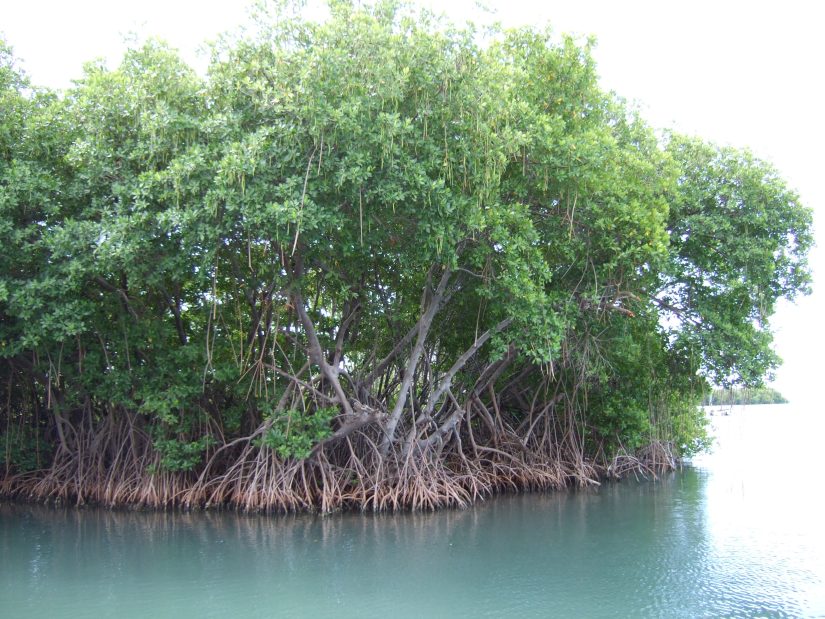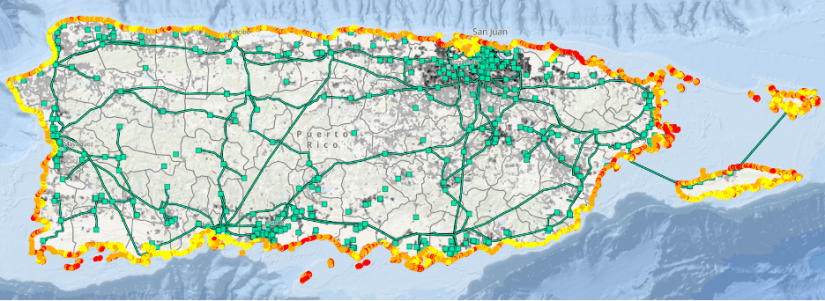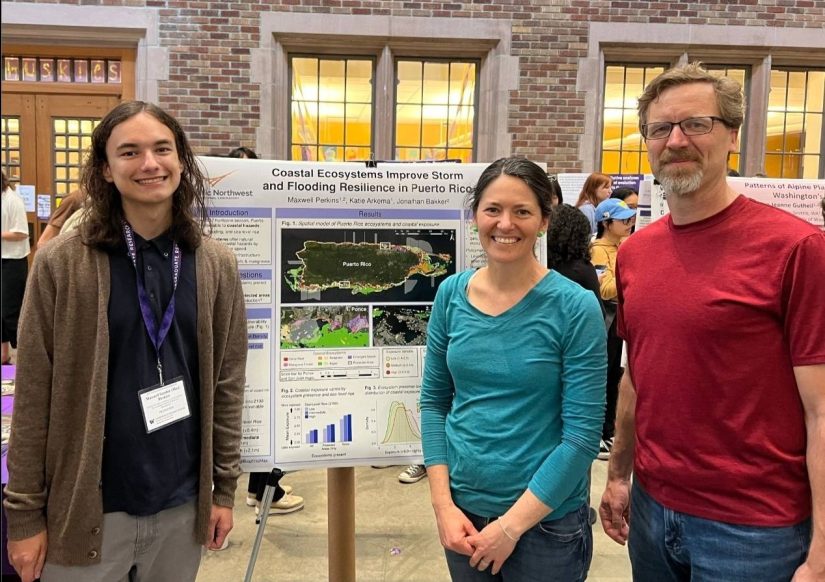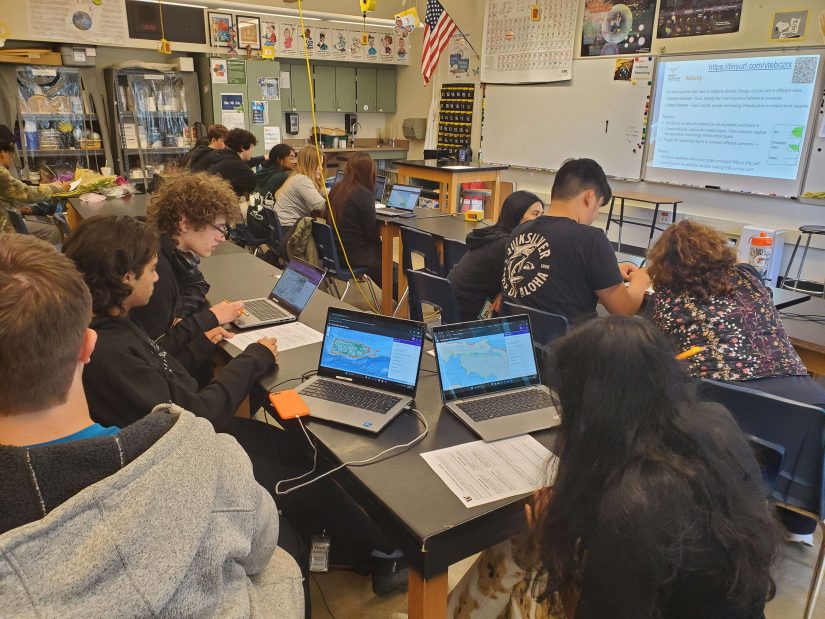Nature-Based Solutions for Coastal Resilience and Climate Hope
As sea levels rise and storms and flooding intensify, it’s easy to feel hopeless about climate change. Unrelenting coastal hazards often seem like a problem bigger than us and beyond our control – for some of us, they even represent nature fighting back for all the harm we’ve done. The barriers to achieving resilience can feel insurmountable, especially when decision-makers and community groups have conflicting visions for a sustainable future and limited funding to get there.
The need for hopeful solutions is evident in Puerto Rico, a U.S. territory in the Caribbean Sea that is vulnerable to coastal hazards. In September 2017, Hurricane Maria devastated the archipelago and destroyed homes, the electrical grid, and other critical infrastructure systems. A prolonged humanitarian crisis ensued in which remote regions lost power for up to eight months, with the storm ultimately causing $90 billion in damages and over 4,500 deaths. Puerto Rico never fully recovered from Maria; poverty and energy insecurity remain major issues. Urgently, Puerto Ricans deserve climate justice through policies that build practical and community-centered resilience to coastal hazards.
One aspect of hazard resilience that could help in this regard is often overlooked – the presence of ecosystems that serve as natural barriers between the ocean and shore. In Puerto Rico, tropical habitats like coral reefs, mangrove forests, and seagrass beds have the potential to lower the risk of coastal flooding and erosion for people and electrical infrastructure while providing many other co-benefits. This potential is significant and well-studied. In particular, coral reefs can reduce wave energy by 97% on average. Unfortunately, this powerful ecosystem service is jeopardized by climate change and unsustainable human activity. If these ecosystems are not conserved and restored now, future hurricanes and other hazards will be even more destructive than Maria.
 Mangroves are one type of ecosystem in Puerto Rico that moderates coastal hazard impacts. Photo courtesy of Boricuaeddie, shared under a Creative Commons License.
Mangroves are one type of ecosystem in Puerto Rico that moderates coastal hazard impacts. Photo courtesy of Boricuaeddie, shared under a Creative Commons License.
Three years ago, I began working at Pacific Northwest National Laboratory (PNNL) to help advance the science and implementation of ecosystem-based coastal resilience. I entered this position with a deep love for nature and a desire to help society appreciate all of nature’s diverse benefits that we take for granted. For me, ecosystem services and “no-regrets” nature-based solutions have always been a major source of hope as news about climate change got progressively worse. The ethos of “win-win” outcomes for people and nature helped me believe that ecosystems were the missing piece for cost-effective and practical climate adaptation. I was eager to operationalize these feelings into action, lean into my curiosity, and share my hope with the world.
“The ethos of ‘win-win’ outcomes for people and nature helped me believe that ecosystems were the missing piece for cost-effective and practical climate adaptation.”
With mentorship from Dr. Katie Arkema at PNNL, I created a web application that shows where coastal communities in Puerto Rico are highly exposed to hazards, and where ecosystems have the potential to reduce risk. To map both the “demand” and “supply” for this ecosystem service, our spatial model combines human community data with hazard risk data generated using software from Stanford’s Natural Capital Project. Our approach follows similar studies in places such as The Bahamas and Mozambique, contributing to an emerging global effort to account for ecosystems in disaster resilience policies. Within this effort, our web app fills a niche by focusing on Puerto Rico and explicitly considering the intersection between green infrastructure and energy infrastructure. The model reveals that dozens of electrical substations and tens of thousands of coastal residents benefit from ecosystems that reduce hazard risk, and this service will disappear if habitat degradation continues unchecked. Our results could support the design of new protected areas and restoration projects that help coastal communities build resilience to extreme events while generating co-benefits for fishing, tourism, and climate mitigation.
 The Puerto Rico Hazard Viewer with layers toggled for coastal hazard risk (with habitats present) and energy infrastructure. Users can toggle more layers to reveal spatial relationships between hazard risk, communities, and ecosystems. Map image courtesy of Max Perkins, shared with permission.
The Puerto Rico Hazard Viewer with layers toggled for coastal hazard risk (with habitats present) and energy infrastructure. Users can toggle more layers to reveal spatial relationships between hazard risk, communities, and ecosystems. Map image courtesy of Max Perkins, shared with permission.
As I continued iterating on this project, I’ve been grateful to present my work at five conferences and knowledge co-production workshops around the Pacific Northwest and as far as Austin, Texas. Our model has served as a conversation starter for managers and community members to discuss what data and tools would be most helpful for their own decision making. Through these events, I’ve gained public speaking and facilitation skills that proved valuable during my time learning and teaching at the UW School of Marine and Environmental Affairs (SMEA). Importantly, these conversations also helped cultivate a much-needed atmosphere of hope, collaboration, and excitement among coastal hazard practitioners.
 Max presented a preliminary model with his coauthors, Dr. Katie Arkema and Dr. Jonathan Bakker, at the 2023 University of Washington Undergraduate Research Symposium. Photo courtesy of Max Perkins, shared with permission.
Max presented a preliminary model with his coauthors, Dr. Katie Arkema and Dr. Jonathan Bakker, at the 2023 University of Washington Undergraduate Research Symposium. Photo courtesy of Max Perkins, shared with permission.
My most recent engagement was at Bellevue’s International School in fulfillment of my Graduate Certificate in Climate Science capstone requirements. There, I shared my project with AP Environmental Science students to collect feedback on a draft of my web app. I designed an activity in which students pretended to be “Conservationists” and “Urban Planners” working together to use the model to find places where a new protected area could improve energy resilience. The activity simulated decision-making in the context of climate adaptation, with parties representing different sets of goals and expertise on a local scale. The students appreciated the web app’s ease of use and ability to reveal synergies between the two groups’ goals.
 International School AP Environmental Science students working on a collaborative activity using the Puerto Rico Hazard Viewer web app. Photo courtesy of Max Perkins, shared with permission.
International School AP Environmental Science students working on a collaborative activity using the Puerto Rico Hazard Viewer web app. Photo courtesy of Max Perkins, shared with permission.
To evaluate the effectiveness of the web app, I administered a survey before and after the activity. The results showed that students gained a strong understanding of ecosystem services and coastal hazards after using the app. Additionally, students reported being more hopeful towards society addressing the climate crisis and more willing to engage with environmental science in their future education and careers. Some students even found a new interest in developing their spatial models for topics like rainforest loss and environmental justice.
“Students reported being more hopeful towards society addressing the climate crisis and more willing to engage with environmental science in their future education and careers.”
I’m grateful to my coauthors and collaborators at PNNL and UW for supporting me throughout this project and helping me achieve milestones I never thought were possible. In March 2025, I submitted my first-ever manuscript for publication in a peer-reviewed journal. The manuscript details the methodology behind our model and the results we generated, and then connects those results to a range of sustainability policies I learned about in my SMEA classes. SMEA also taught me the importance of transdisciplinarity, ethical engagement, and cross-sectoral collaboration in the effort to translate knowledge into action. These ideas pushed me to reflect on my positionality and to center equity and justice as I wrote the manuscript. As my project finally comes to a close, I’m excited to continue bringing people together to inspire hope and advance science through creative, nature-based solutions for climate resilience.